The Nature
Observer’s Journal
The Nature
Observer’s Journal

Palm Tree Warblers
By Chuck Tague
Spring arrived at 8:20 a.m. on March 21, 2001. I didn’t notice any difference. The sun shined brightly in the clear morning sky. The gentle breeze that blew across the ocean felt cool and refreshing. A mockingbird sang from a nearby bush. An Osprey circled overhead and squealed.
To be honest, I never noticed the season change. I wasn’t even wearing my watch. Heck, I was in the Florida Keys. I never wondered what the weather was like up north. I just assumed it was gray and dismal with temperatures near freezing.
My wife Joan and I walked along the beach and admired the turquoise sea. A pack of ten or twelve small songbirds flitted in front of us. One bold little fellow shot between us to join the group. Another hopped behind a low plant just above the tide line. We walked by within a few feet of the curious bird. As we passed it wagged its tail vigorously, like an excited dog. I stopped and took its picture.
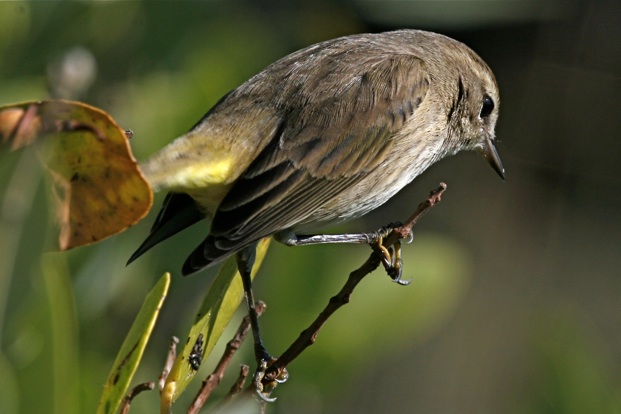
The bird was smaller than a chickadee. The wagging tail and its chestnut cap told us it was a Palm Warbler, Setophaga palmarum. Each flip flashed a patch of yellow under its tail. Its back was olive-brown and it had a bold yellow stripe through its eye. After we passed, it flew ahead of us and landed with its mates in some seaweed left by the tides. One of the birds hopped up and snapped an insect.
Joan and I stopped to watch the warblers forage. The debris on the beach was Sargassum Weed, a gold-colored brown algae that grows in warm tropical waters. It broke loose into the Gulf Stream and washed ashore. Although it was dried and bleached, there was still some sargassum gold mixed with the faded greens and browns. The warblers blended in well.
Joan and I reached the channel that separates Bahia Honda Key from its neighbors to the east. This short channel connects the Atlantic Ocean with the Gulf of Mexico. We stopped and sat on a chunk of twisted driftwood. The Palm Warblers stayed with us. They busily probed the dried sargassum with their thin pointed beaks. Like Joan and I, the warblers were travelers. The birds hatched in a bog somewhere in northern Canada, but they were not on a pleasure trip. Their journey was a one of survival.
As we watched, the Canadian-born birds fed on small animals in seaweed from deep tropical waters – the global economy of nature. One of the warblers darted over our heads and landed in a low palm. Palm Warblers usually stick close to the ground, but occasionally they land in a small tree or shrub, like the Silver Palms at Bahia Honda. When John James Audubon visited the Florida Keys he painted these tiny birds in palm trees.
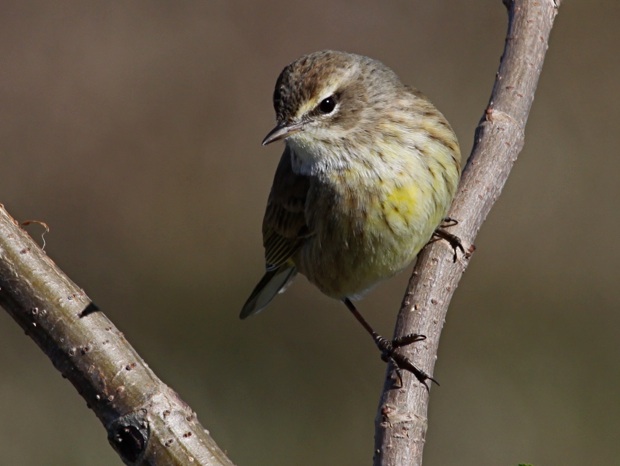
A loud truck horn sounded and I became aware of the traffic noise behind me. A bridge crosses the channel, one of a series of bridges on U.S. Route 1 that link the Florida Keys. On the bridge was a parade of recreational vehicles, SUVs and huge pickup trucks. It was the first day of spring, time for the snowbirds to head home. Snowbirds are the retired northerners that winter in Florida. They were off to Quebec, Ontario, New England, New York, Ohio and Pennsylvania. (Four years later, Joan and I joined their ranks.)
The Palm Warblers rummaged through the seaweed, unaware that the season had changed. The exact moment of the Vernal Equinox meant nothing to the tiny birds. However, they were very aware that the sun was rising earlier and setting later. They instinctively knew it was time to prepare. They, too, would soon migrate north.
Whenever I encounter a familiar bird on its wintering grounds I always wonder, “Is a this a bird I saw on its passage through Pennsylvania.” The odds against this are astronomical, and of course, there is no way I could know. However, it is not out of the realm of possibilities that the Palm Warblers on the beach migrate through western Pennsylvania.
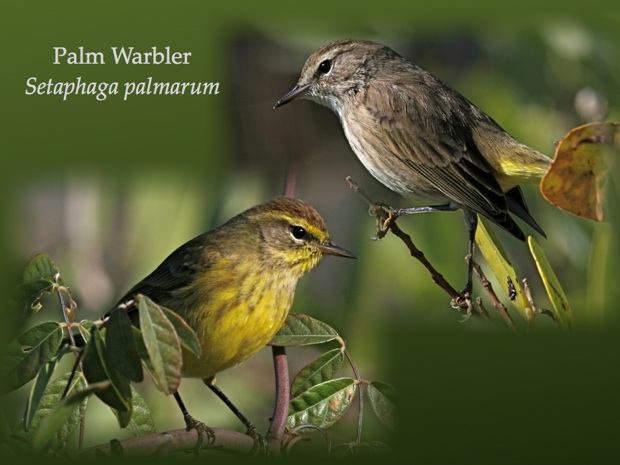
There are two distinct and recognizable subspecies of Palm Warblers. The Yellow Palm Warbler, S. p. hypochrysea, breeds in eastern North America from New England north. These birds have bright yellow underparts and a yellow eye ring. Most winter in northern Florida and west along the Gulf Coast through Mexico. During spring migration, they follow the Atlantic Coast north.
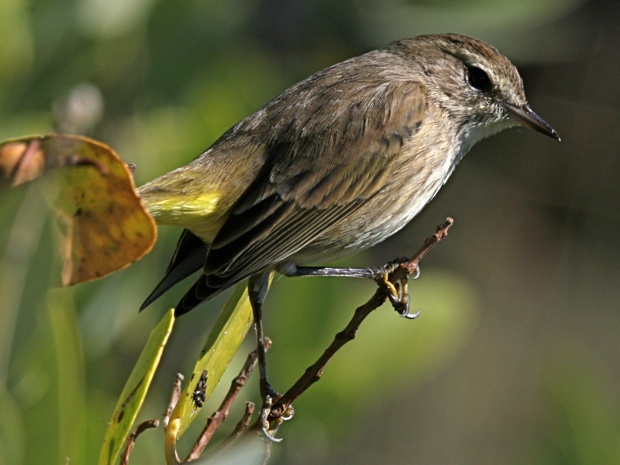
The warblers on the beach were Western Palm Warblers, S. p. palmarum. This race is pale between its yellow throat and yellow undertail coverts. It winters in southern Florida, Cuba and the West Indies. In spring, it migrates along the western slope of the Appalachians to north central Canada.
A few days later Joan and I joined the snowbirds’ migration. For two tedious days, we followed the crowded, concrete trail. We drove up the Florida Peninsula, across the coastal plain and over the piedmont to North Carolina. We crossed the mountains in Virginia and then followed the western ridges of the Appalachians home.
The Palm Warblers will soon follow us. They travel by night and use a similar route. The first Western Palm Warblers arrive in Pennsylvania in mid April. Most show up in early May, rest a day or two, then continue north.
In May 2001 we were in Pennsylvania, waiting for them.
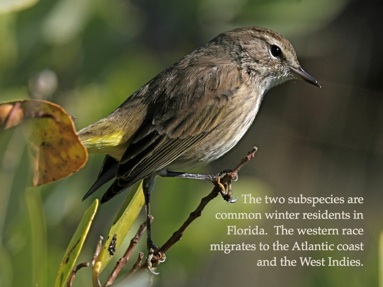
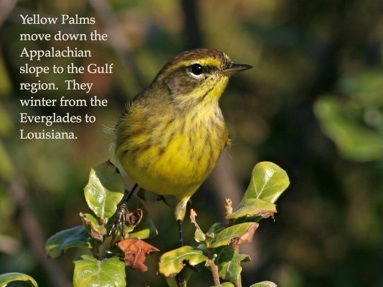
Tuesday, March 6, 2012
